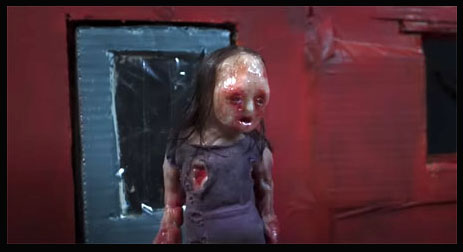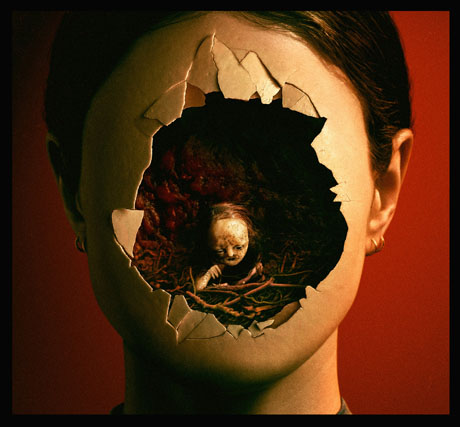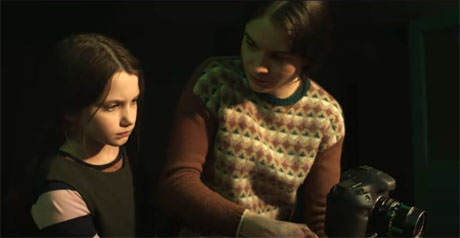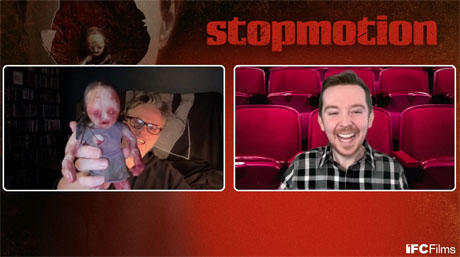
Beginning this Friday February 23rd, you can head to theaters for a new live-action, R-rated horror movie about the art and intensity of stop-motion animation. Stopmotion is directed and co-written by Robert Morgan, who shares how he pulled-off this bold, unforgettable movie. (This Animation Scoop Q&A was edited for length and clarity.)
Jackson Murphy: When did you first know that stop motion animation was not just a passion for you, but something you could turn into a big career?
Robert Morgan: I sort of slipped into it, really. There was never like a big realization where I was going to have a career. It was more just a question of following the things I wanted to make. 20 years later I’ve got a bunch of films that I’ve made and I’m a filmmaker, so it was never a conscious decision. I just follow the things I like and ended up making films. I was always drawing and sculpting and painting. I wanted to get into filmmaking and it was just a natural way of taking what I was already doing and then making those things move a little bit. And so animation became a natural next step into making things take on the extra dimension of time and movement. So yeah, there was never a big realization. It was just a kind of organic process, really.

JM: Nice. And, how do you feel horror enhances the power of stop motion? We see it in your movie in specific scenes, but how do you feel overall that horror makes this art form even more of an opportunity for creativity and expression?
RM: It always surprises me that more people don’t explore horror within stop motion animation because I’ve always found it to be an uncanny, slightly creepy art form. It has an ambience and a quality to it, which is slightly uncanny. The slight jerkiness to things as they move, the slight feeling that it has the illusion of life, but it’s kind of not, because it’s been posed. So there’s always been, I think, a sort of uncanny quality to it that’s naturally there. So for me, it’s a very short leap to then start making films that are essentially horror films with stop motion animation.
JM: This movie is about Ella, a young woman who’s the daughter of a stop-motion animation legend, and she’s taking on this latest project… and it takes over her. How much would you say stop-motion animation, when it comes to making this movie, was a mental test for you and pulling off everything that you do?
RM: Well, every film has its own mental tests. This one was bigger than normal because it’s a feature film and it balances live-action elements with stop-motion animation elements, sometimes in the same scene. So it’s essentially a live-action film which is telling a live-action story in the way that you would expect with a character and following that character around. It sometimes slips into animation because she’s making an animation film. But then there are times when the animation characters step out of the film and sort of come into her life as well. So technically it was very challenging… but overall, it wasn’t that tough really because I had an amazing team, and we planned it very well. And when you’ve got a very, very talented bunch of collaborators and you plan everything well you can achieve amazing things. Having a great team has really made it much easier to achieve.

JM: It is a balancing act of suspense, the horror we’ve come to expect from live-action movies, and a stop-motion animation story in the middle of it. How did you decide on what the story would be for what Ella is making?
RM: It had to be something that was very simple and it had an almost fairytale quality that a little girl could tell and could drip feed. So it was deliberately very simple and almost archetypal and primal. Because the film sort of segues between… well, I can’t say too much because it will spoil the film, but… some of that stuff starts to kind of come alive and the boundaries get blurred between the film she’s making and the real-life experience. Because there’s a lot going on in the film, it’s a character study and we deal with her life and we have relationships and things like that. And then there’s the film that she’s making. There’s two films that are being made within the film. Various relationships in the film. The film within the film then had to be very simple because if that was complicated as well, the whole thing just becomes too complicated. So it just had to be something that was very primal and easy to understand.
JM: There’s a lot going on and I think audiences are going to be blown away by the impact of this. Did your lead actress, Aisling Franciosi, who plays Ella, have a fascination with stop-motion animation going into this, and what was the preparation process like for her to get in the mindset of stop-motion animation?
RM: What she related to was the idea of that creative struggle. The story is telling the story of a stop-motion animator, but I think it could be about any creative endeavor. The idea of, of losing perspective on your obsession with your art and losing yourself and not being able… to pull out from that. And that’s something that I think Aisling related to. She’s very, very obsessive and passionate about her work. So that was what she saw. And stop-motion is really the vehicle of addressing those kinds of issues. So I think it’s quite universal in terms of creative struggle. It’s not necessarily specifically about stop-motion. It’s about any kind of creative struggle.

JM: I agree with you completely because one of the themes / lessons I got out of this movie is you need to make sure your voice is heard and your ideas get out there. And I’m so glad that was a goal for you to showcase that to audiences. That’s great.
RM: Yeah, yeah, but within reason. (laughs) You need to get your voice out there, but don’t let it destroy you.
JM: Right. Yes. The early-on interactions between Ella and her mother are very intense. How was it crafting that? And then you’ve got a young girl element in this too, and there’s a lot involving family and identity.
RM: I think it just comes out of the very obsessive relationship between two people who are obsessive. And one of those people, her mother, her health is failing and she doesn’t have the ability to execute things the way that she used to. So she’s making her daughter essentially become like her hands. So it’s almost like a slavish relationship. It’s quite manipulative and not entirely healthy. And that kind of takes its toll on Ella. So those scenes are quite loaded with a lot of stuff to do with legacy and codependency and resentment and frustration. And it’s all sort of bubbling under the surface of both of them, the character of Suzanne (her mother) and Ella.
JM: This has been a big time for horror movies — the last couple years. Indies that have made tens of millions of dollars, blockbuster horror films, being able to watch them both in theaters and at home. You’ve got IFC and Shudder behind this. What does that mean to you — this time that we’re in with horror and having these studios behind this film?
RM: There’s a lot of great stuff going on, like you say, with horror. There’s some really interesting, unusual films. I’m always of the opinion… I love horror, I grew up watching horror. It’s always nice to see people trying to do original things within the genre because there is a certain set of tropes you can rely on. And that’s fun too, but I always think there’s so much more you can do with it. You can tell much more original stories. And IFC and Shudder are absolutely at the forefront of championing those kinds of voices and making distinctive films, almost like art films within the horror genre. They’re films that are artistically sophisticated and original and challenging — but also they deliver on what you would want from a horror film too. So yeah, I’m very happy to have teamed up with IFC and Shudder.

Robert Morgan and Jackson Murphy
JM: So where are the characters? Where are the stop-motion characters that you made for the film?
RM: I actually, well, I mean, I didn’t plan this but I do actually have one right here with me. She’s fully movable. She’s already done her starring role. She’s had a bit of a split in her neck. She’s not in the best condition, but she’s retired now. They’re all in my house, actually.
JM: Wow! Do they creep you out if you see them in the middle of the night, you’re walking by like, “Whoa, what, what’s going on?”
RM: They haven’t done anything too creepy yet, but you never know. Hopefully I’ll see them crawling around.
JM: Have you ever had… any scary dreams that have turned into something you’ve created?
RM: I had a dream when I was about five years old, which slightly inspired a scene in the film actually, where I was lying in bed… I think I must have been a bit feverish or something. A pink fluffy woodlouse crawled onto my bed and slowly crawled up the bed and then bit my finger. And that really stayed with me for some reason. It freaked me out as a kid. And there is a scene in “Stopmotion” where a figure comes into a bedroom and climbs up into a bed, which is inspired by that dream.
- INTERVIEW: Jeff Fowler On “Knuckles” And “Sonic 3” - April 22, 2024
- INTERVIEW: “Inside Out 2” Director And Producer On Pixar Sequel - April 16, 2024
- INTERVIEW: “Puffin Rock And The New Friends” And 25 Years Of Cartoon Saloon - April 10, 2024


 February 19th, 2024
February 19th, 2024  Jackson Murphy
Jackson Murphy  Posted in
Posted in  Tags:
Tags: 






